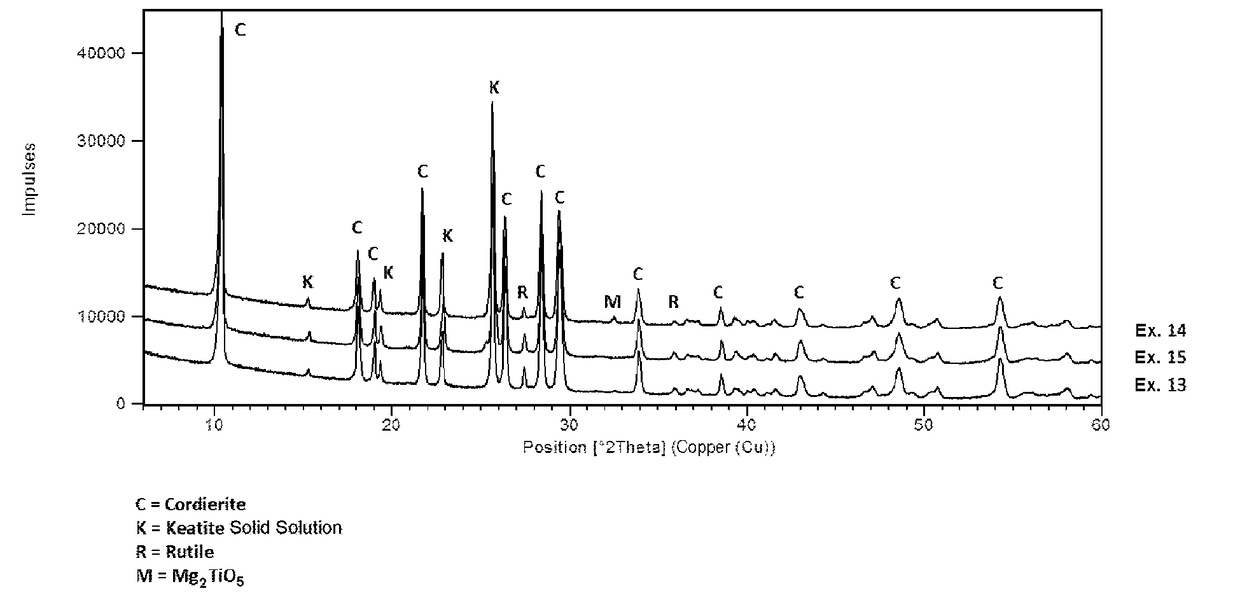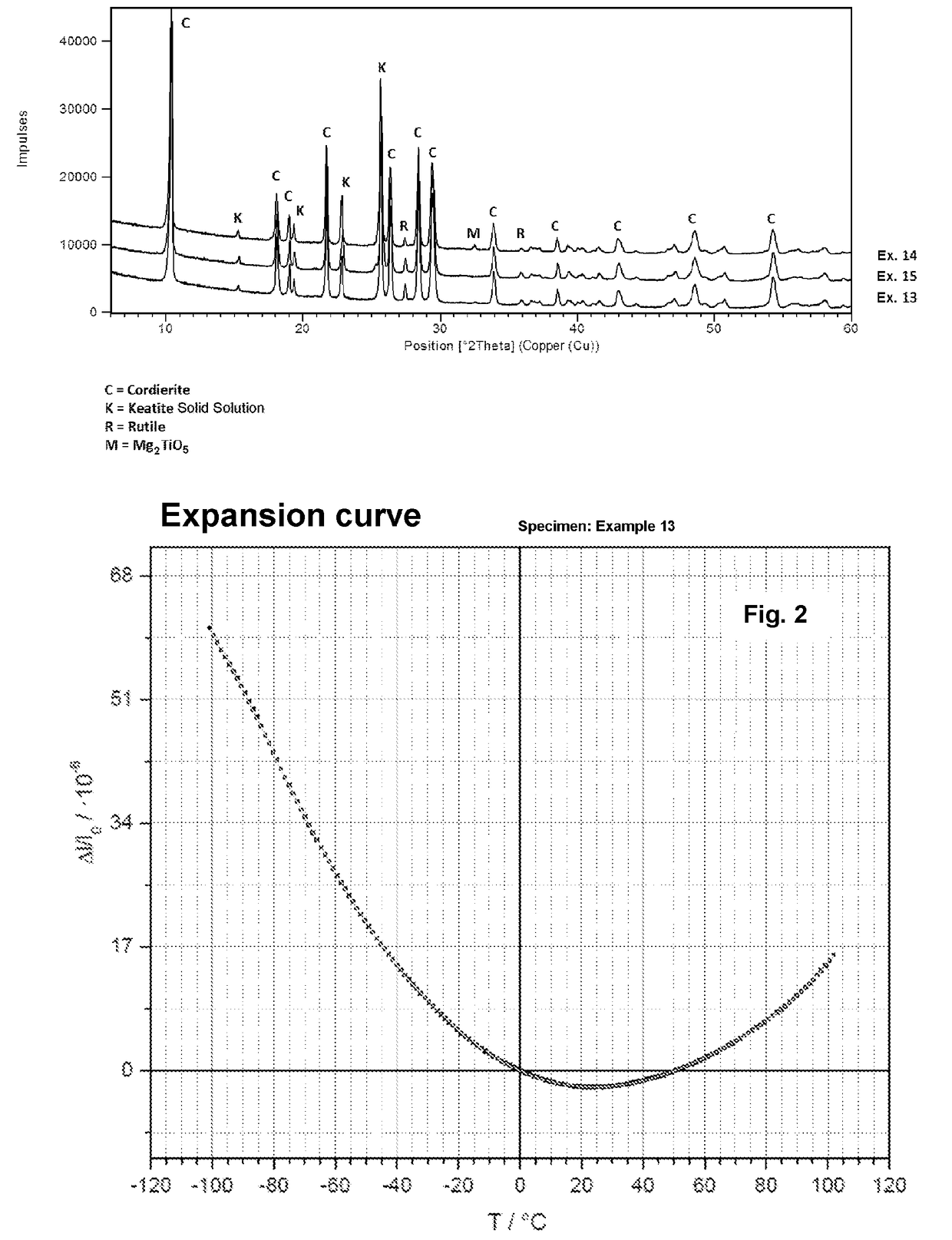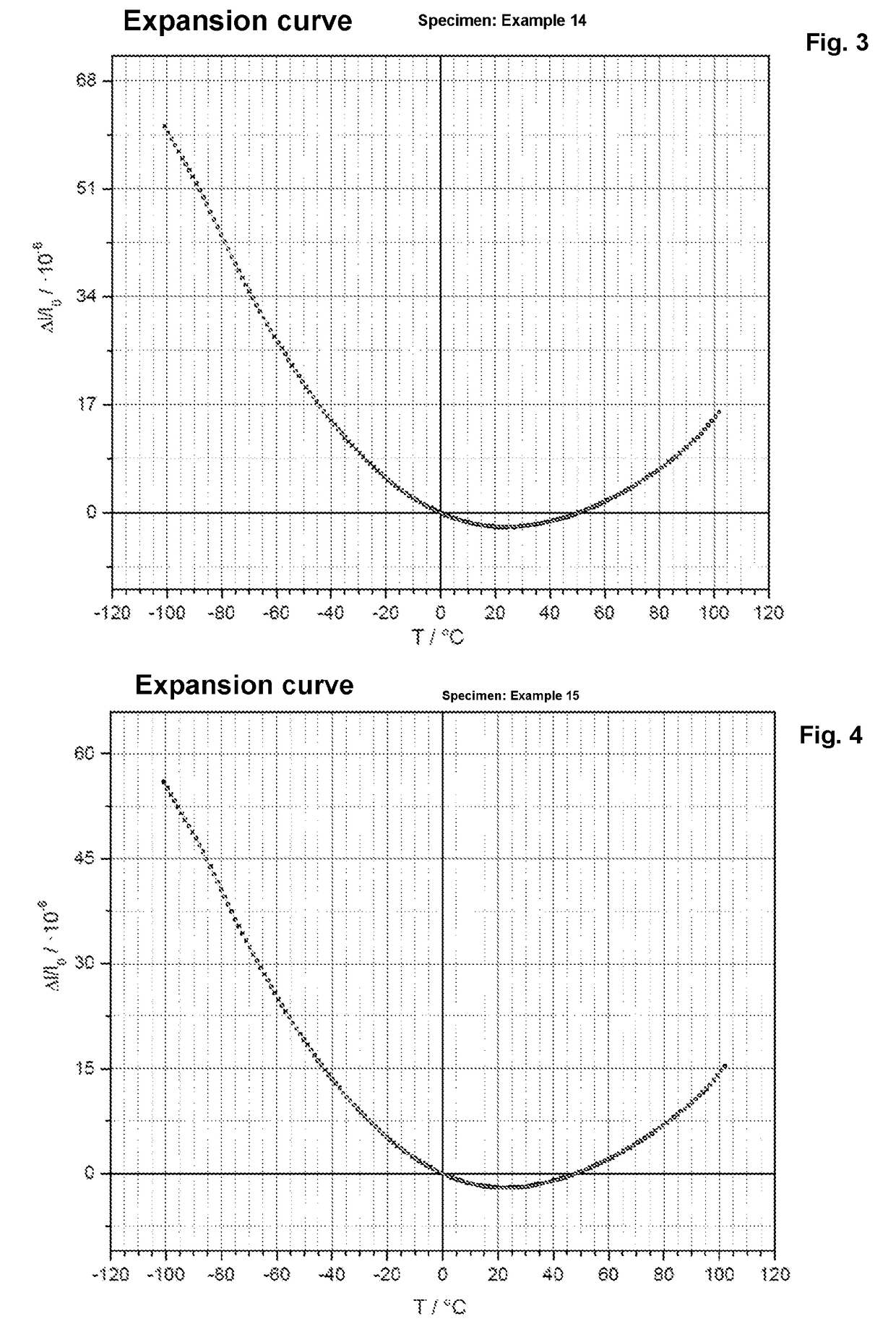Cordierite Glass-Ceramic
a technology of cordierite glass and glass-ceramic, which is applied in the field of cordierite glass-ceramic, can solve the problems of not having a sufficiently high young age combined with a sufficiently low thermal expansion of these materials
- Summary
- Abstract
- Description
- Claims
- Application Information
AI Technical Summary
Benefits of technology
Problems solved by technology
Method used
Image
Examples
examples
[0112]The green glasses having the compositions shown in Tables 1 to 3 were melted and refined at temperatures of 1500-1650° C. using raw materials customary in the glass industry. The mixture was melted in Pt / Rh crucibles, optionally with inner crucibles composed of fused silica, and homogenized at temperatures of about 1580° C. for 30 minutes by stirring. After being allowed to stand at 1600° C. for 2 hours, cast pieces of various sizes were cast and annealed in a cooling furnace at a temperature somewhat below Tg and cooled to room temperature. The test specimens for measurement of the properties in the vitreous state (Tg, Va, ρ) and for ceramization were prepared from the cast pieces.
[0113]For ceramization, the specimens were ceramicized at a maximum temperature of 1180-1250° C. for 4-20 hours. The thermal expansion, the Young's modulus, Poisson's ratio and the density of the glass-ceramic were determined on the specimens obtained in this way.
[0114]The thermal expansion was meas...
PUM
| Property | Measurement | Unit |
|---|---|---|
| Temperature | aaaaa | aaaaa |
| Fraction | aaaaa | aaaaa |
| Fraction | aaaaa | aaaaa |
Abstract
Description
Claims
Application Information
 Login to View More
Login to View More - R&D
- Intellectual Property
- Life Sciences
- Materials
- Tech Scout
- Unparalleled Data Quality
- Higher Quality Content
- 60% Fewer Hallucinations
Browse by: Latest US Patents, China's latest patents, Technical Efficacy Thesaurus, Application Domain, Technology Topic, Popular Technical Reports.
© 2025 PatSnap. All rights reserved.Legal|Privacy policy|Modern Slavery Act Transparency Statement|Sitemap|About US| Contact US: help@patsnap.com



